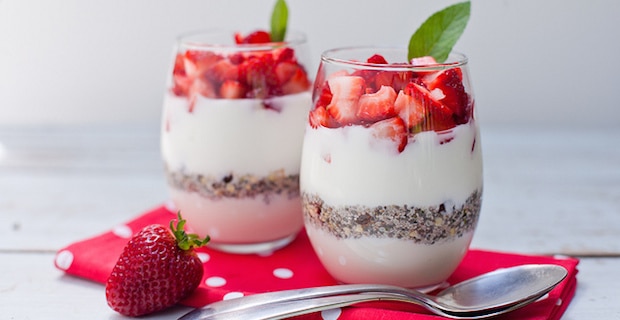
We’ve seen the commercials: belly dance your way to better health though consumption of probiotic yogurt. The addition of probiotics to foods like orange juice, bread, milk, ice cream and even chocolate is just part of slick advertising to sell products. However, probiotics are essential to a healthy immune system and an important factor to overall good health. Regardless of how the message is getting out, I’m happy people (and advertising firms) are catching on.
What are probiotics and why they are so important to us? According to the Food and Agriculture Organization of the United Nations and the World Health Organization, probiotics are “live microorganisms which when administered in adequate amounts confer a health benefit on the host”. Basically, probiotics are live, friendly, beneficial bacteria. They live in both the large and small intestines and play an important role in keeping us healthy.
Read more about the effects of antibiotics on beneficial bacteria
Friendly bacteria are a key component of the digestive system. They improve gastrointestinal functions; enhance immunity; help regulate hormone balance; protect us from food-borne illnesses; control overgrowth of bad bacteria and fungus, such as candida/yeast; protect us from developing allergies; assist in vitamin production and nutrient absorption; and perform countless other important functions.
It is important to keep a balance of good bacteria in our bodies, however many things can easily upset this equilibrium. Medications, stress, hormonal changes, poor diet and nutrient deficiencies can decrease the population of probiotics in our bodies. Drugs such as broad spectrum antibiotics not only kill the so-called bad bacteria we want to get rid of, but also the good bacteria in the digestive tract. Other medications that upset this balance include anti-inflammatory drugs, birth control pills and steroids.
The great news is we can increase the friendly bacteria in our bodies by simply adding certain foods to our diet, such as yogurt, buttermilk, kefir, miso, tempeh, sauerkraut and other fermented foods. You can also supplement with probiotics from your local health food store. When looking for a good probiotic, ensure that there is a delivery system, such as a capsule, to protect the probiotics from being destroyed by stomach acid.
You may have heard the similar term, prebiotics, and wondered what the difference was between them and probiotics. Prebiotics are foods that contain nutrients that actually feed the probiotics. Prebiotic containing foods include asparagus, artichokes, unrefined oats, flax, barley (and other whole grains), onions, garlic, greens, honey, legumes (including lentils, chickpeas, and kidney, navy, white and black beans), berries, bananas, and other fruit.
Eating a combination of prebiotic and probiotic foods is important to keep beneficial bacteria thriving. When you eat prebiotic foods, you nourish the good bacteria in your body. By eating probiotic foods, you replace friendly bacteria that have been lost.
Here are some great ways to add both prebiotics and probiotics into your diet:
- Add banana or berries (prebiotics) to unsweetened yogurt or kefir (probiotics) for breakfast or as a snack.
- Include miso soup to your line up of weekly lunches. It’s a tasty probiotic food. Pair it with a bean salad and you have a full lunch that includes both probiotics and prebiotics. Beans like lentils, kidney beans, chickpeas and navy, white or black beans, are full of soluble fiber, low in fat and cholesterol and packed with vitamins and minerals.
- Add tempeh to your salads and stir-fry’s. Tempeh is a probiotic that is high in protein and fibre and low in calories.
- Feed the good bacteria in your gut by eating more asparagus or spinach. I like mine slightly sautéed with garlic for a double dose of prebiotics.
- Add prebiotic vegetables such as spinach and tomatoes to your salads. Make a yogurt based dressing to include those probiotics too.
- Eat Tzatziki! For my recipe, click here.
Read more about fermented drinks you should drink for your health
Play with prebiotic and probiotic foods. It’s amazing how versatile they are and so easy to fit in to your diet. Include some of these prebiotic and probiotic foods in your diet on a regular basis for good health, and you’ll feel great.
Image: Hapi Foods Group Artisan Cereals










